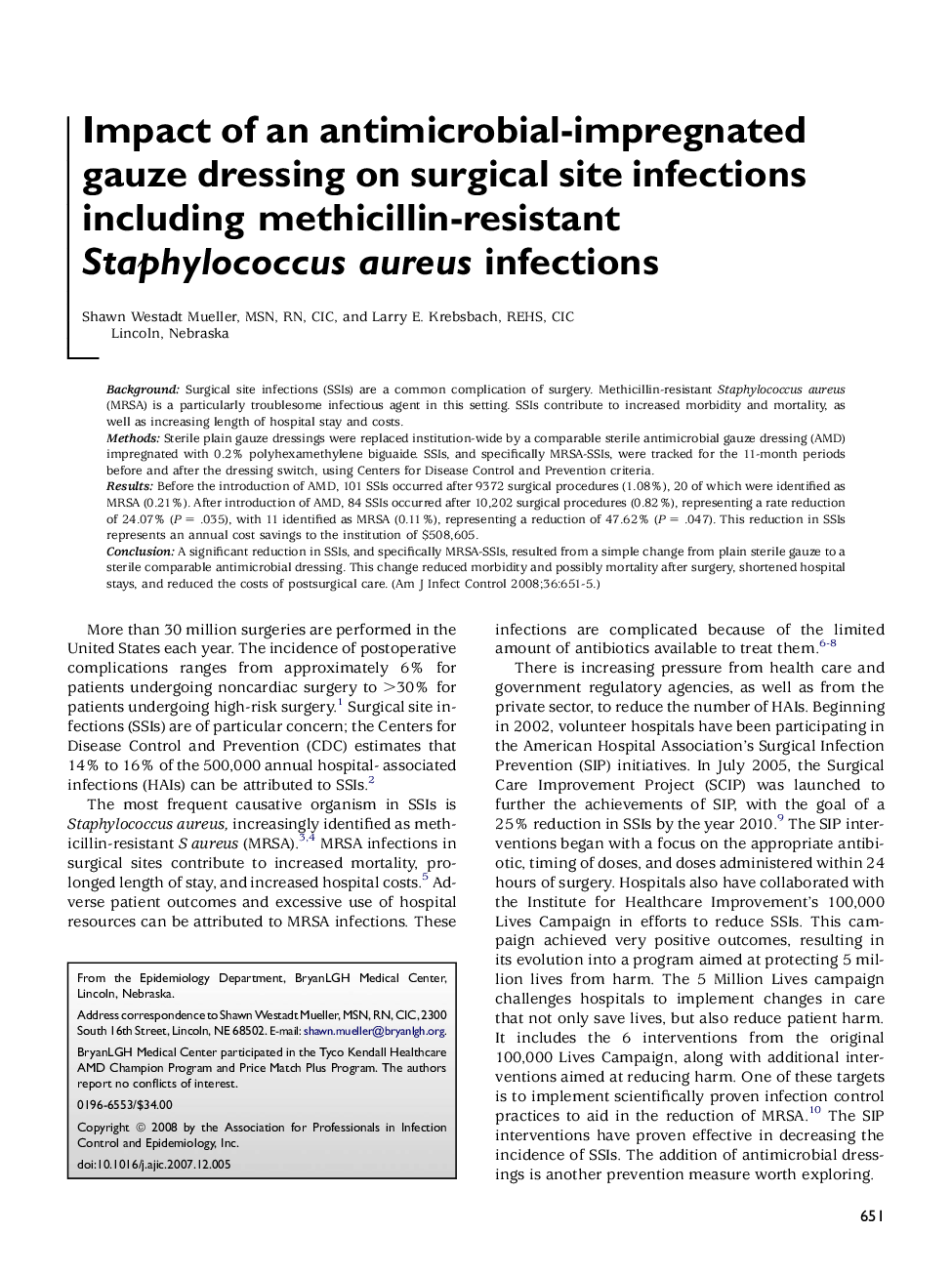| Article ID | Journal | Published Year | Pages | File Type |
|---|---|---|---|---|
| 2638962 | American Journal of Infection Control | 2008 | 5 Pages |
BackgroundSurgical site infections (SSIs) are a common complication of surgery. Methicillin-resistant Staphylococcus aureus (MRSA) is a particularly troublesome infectious agent in this setting. SSIs contribute to increased morbidity and mortality, as well as increasing length of hospital stay and costs.MethodsSterile plain gauze dressings were replaced institution-wide by a comparable sterile antimicrobial gauze dressing (AMD) impregnated with 0.2% polyhexamethylene biguaide. SSIs, and specifically MRSA-SSIs, were tracked for the 11-month periods before and after the dressing switch, using Centers for Disease Control and Prevention criteria.ResultsBefore the introduction of AMD, 101 SSIs occurred after 9372 surgical procedures (1.08%), 20 of which were identified as MRSA (0.21%). After introduction of AMD, 84 SSIs occurred after 10,202 surgical procedures (0.82%), representing a rate reduction of 24.07% (P = .035), with 11 identified as MRSA (0.11%), representing a reduction of 47.62% (P = .047). This reduction in SSIs represents an annual cost savings to the institution of $508,605.ConclusionA significant reduction in SSIs, and specifically MRSA-SSIs, resulted from a simple change from plain sterile gauze to a sterile comparable antimicrobial dressing. This change reduced morbidity and possibly mortality after surgery, shortened hospital stays, and reduced the costs of postsurgical care.
